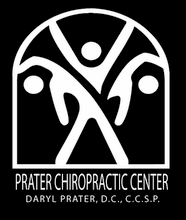
Congratulations! You have persevered and trained through 18 weeks of tough winter training. Despite the trials we encountered on the journey, we will soon be boarding planes or hopping into our cars headed for our final destinations. For those headed to Boston, the city portrays great history and exudes energy like none experienced anywhere else. The entire city embraces the Boston Marathon with excitement and vigor as part of the Patriots Day celebration. Children, excused from school for the holiday, are everywhere lining the course. Amidst all the enthusiasm and hype surrounding marathon weekend, you will also encounter a rather illogical street layout, marathon activities spread out all over Boston proper and beyond, and a course that has gained legendary notoriety and fame. The tips in this article and its links should help you navigate both!
The Boston Marathon course is a legend within its own right. Heartbreak Hill’s reputation extends far beyond the ranks of the running community. Despite its fame, the final of the Newton Hills isn’t the only unique attribute to the Boston course. Rather than author a mile by mile replay, however, I have attached a link to one of the best articles I have ever read describing the course and the appropriate strategy for each section. It comes from the April 2005 issue of Runners World and offers a mile by mile breakdown. This was my guide when I ran and set my PR at the 2005 Boston Marathon. Print it out, read it, study it and commit it to memory. It will help you as you leave the starting line corrals in Hopkinton and embark on your journey ending with the finish line on Boylston Street.Boston Marathon Course TipsBoston Marathon Course Map Breakdown
Once again we are passing on this great link which can be used to generate your own special pacing bracelet based on goal time, as well as several pacing strategy options ranging from effort-based pacing to even splits. Check out the Pacing Bracelet
The most important advice for navigating the city is to leave the car at home or park it in the hotel and let it stay parked! Unlike New York and Chicago, the streets of Boston proper don’t boast a perfect grid layout. Traffic marathon weekend is horrendous. Two years ago, as we drove to our hotel near the Hynes Convention Center, it took us an hour to drive around a single city block. On the flip side, the Boston subway system, the T, is relatively easy to navigate and convenient to most marathon weekend activities.
For those staying at the Omni Parker House and other hotels near Government Plaza and the Boston Common areas, the Boylston and Government Plaza Stations are also conveniently located and part of the Green Line. To get to the Freedom Run starting at Copley Park, hop on and get off at the Copley Station, also on the Green Line (note this stop is closed race day) You can get to the pasta party via the Green line Government Center station. Race Day bus boarding is most conveniently accessed via the Boylston stop, and the finish line area can be accessed via Arlington.
The only guaranteed way to get to the start in Hopkinton race morning is by using the B.A.A buses from Boston to Hopkinton race morning. Boarding times are assigned by bib numbers which last year began at 6:00 am and ended at 7:30 am. The bib number assignments are recommended, but not enforced. Parking in Hopkinton is extremely limited. We had one runner a couple of years ago try to wait the longest possible time to board, and ended up missing the shuttle altogether. Somehow she managed to obtain a police escort to the start in Hopkinton!
Once in Hopkinton, the buses will drop you off at the entrance of Athletes Village, which is worth a visit even if you are heading to the Kalamazoo Hopkinton House. Athletes Village has plenty of free food and some interesting vendors. From Athletes Village, it is a little under a mile walk to the starting corrals. The Tracey home is about halfway there on Hayden Rowe. From there, it is a short walk to the starting corrals.Plan ahead, know where you need to go and how to get there, then have FUN!









